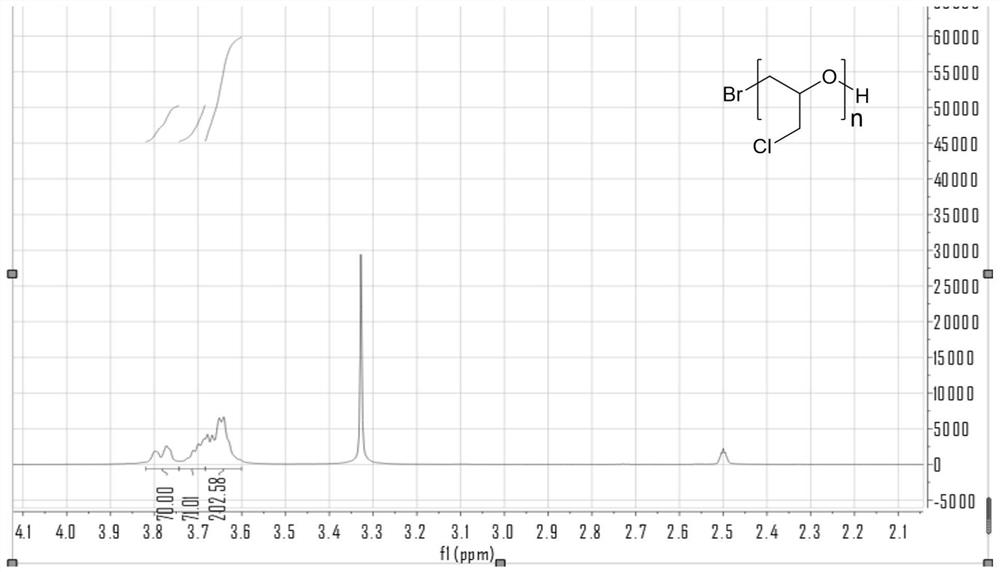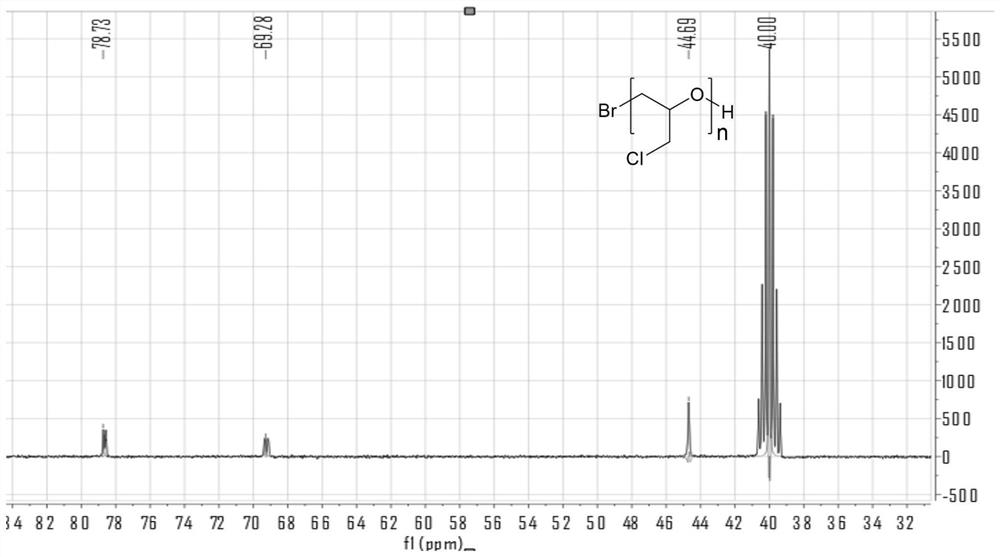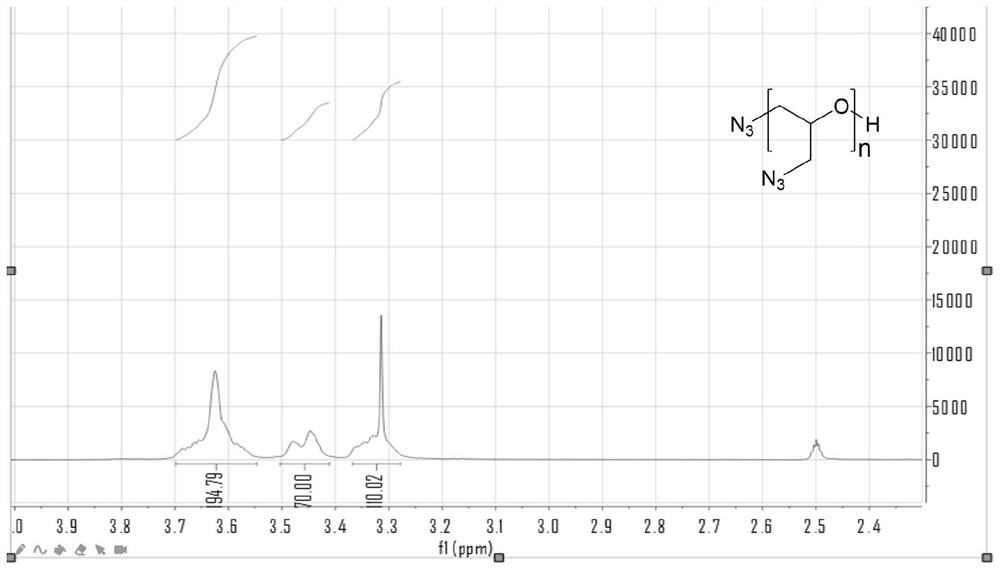Cationic polymer gene vector and preparation method thereof
A technology of cationic polymer and gene carrier, applied in the field of cationic polymer gene carrier and its preparation
- Summary
- Abstract
- Description
- Claims
- Application Information
AI Technical Summary
Problems solved by technology
Method used
Image
Examples
Embodiment 1
[0049] p-Toluenesulfonyl-terminated polyethylene glycol monomethyl ether mPEG 2k -OTs modified polyglycidylamine, the preparation method of which comprises the following steps:
[0050] (1) p-toluenesulfonyl chloride (2.478g, 13.000mmol) was dissolved in pyridine (25.000mL) to prepare a pyridine solution of p-toluenesulfonyl chloride. Under nitrogen protection, in a 100mL two-neck round bottom flask, add polyethylene glycol monomethyl ether mPEG 2k (4.000g, average molecular weight 2000) and anhydrous dichloromethane (50.000mL), stirred and dissolved at 35°C, then added dropwise the pyridine solution of p-toluenesulfonyl chloride prepared above, after the dropwise addition, reacted at 35°C for 24h. After the reaction finished, dichloromethane was added for dilution, and water and mass concentration were 5% dilute hydrochloric acid to extract 3 times respectively, and the organic phase after extraction was washed with anhydrous Na 2 SO 4 Dry, filter, and rotary evaporate und...
Embodiment 2
[0055] Carboxy-terminated polyethylene glycol monomethyl ether mPEG 2k -COOH modified polyglycidylamine, the preparation method of which comprises the following steps:
[0056] (1) Under nitrogen protection, in a 100mL two-necked round bottom flask, add polyethylene glycol monomethyl ether mPEG 2k (1.440g, average molecular weight 2000), 4-dimethylaminopyridine (0.890g, 7.200mmol), triethylamine (0.200mL, 1.440mmol), anhydrous dichloromethane (20.000mL), stir well at 25°C Then, a solution of succinic anhydride (0.730 g, 7.200 mmol) in dichloromethane (20.000 mL) was added dropwise. After the dropwise addition, the stirring reaction was continued for 24h. After the reaction was finished, dichloromethane was added for dilution, and water and 5% dilute hydrochloric acid of mass concentration were extracted 3 times respectively, and the organic phase after extraction was washed with anhydrous Na 2 SO 4 Dry, filter, and rotary evaporate under reduced pressure to obtain a concen...
Embodiment 3
[0061] Carboxy-terminated polyethylene glycol monomethyl ether mPEG 4k -COOH modified polyglycidylamine, the preparation method of which comprises the following steps:
[0062] (1) Under nitrogen protection, in a 100mL two-necked round bottom flask, add polyethylene glycol monomethyl ether mPEG 4k (2.880g, average molecular weight 4000), 4-dimethylaminopyridine (0.890g, 7.200mmol), triethylamine (0.200mL, 1.440mmol), anhydrous dichloromethane (80.000mL), stir well at 25°C Then, a solution of succinic anhydride (0.730 g, 7.200 mmol) in dichloromethane (20.000 mL) was added dropwise. After the dropwise addition, the stirring reaction was continued for 24h. After the reaction, dichloromethane was added to dilute, and extracted three times with water and 5% dilute hydrochloric acid respectively. Anhydrous Na for organic phase 2 SO 4 Dry, filter, and rotary evaporate under reduced pressure to obtain a concentrated solution. The concentrated solution was precipitated and purif...
PUM
 Login to View More
Login to View More Abstract
Description
Claims
Application Information
 Login to View More
Login to View More - R&D
- Intellectual Property
- Life Sciences
- Materials
- Tech Scout
- Unparalleled Data Quality
- Higher Quality Content
- 60% Fewer Hallucinations
Browse by: Latest US Patents, China's latest patents, Technical Efficacy Thesaurus, Application Domain, Technology Topic, Popular Technical Reports.
© 2025 PatSnap. All rights reserved.Legal|Privacy policy|Modern Slavery Act Transparency Statement|Sitemap|About US| Contact US: help@patsnap.com



